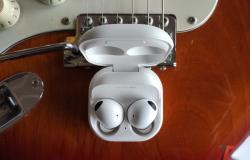
Tinder, Bumble and co. in difficulty after the boom of the Covid years: the fault of the generational turnover which is struggling to take hold
Rise, triumph, decline. All this in just over ten years: let this be the (very fast) parable of dating apps? From the launch of Tinder in 2012, which led the way, to the boom during the Covid years, we have now reached the crisis of dating platforms.
What has changed? In part these sites are suffering from the general slowdown affecting the big tech companies, in part it has to do with generational turnover. The pool of products is exhausted Millennials (first, enthusiastic subscribers, many who got married thanks to these apps and now at the turning point of the first “children of Tinder”), dating apps must now conquer the Generation Z. That is, young people aged 18 to 27, not only digital natives but already “mobile-born” because they were born and raised with smartphones and tablets. Who, at least for now, are little or not at all interested in dating apps: in fact, they represent only 26% of members compared to 61% of Millennials, according to a survey carried out by Statista in the USA last year.
Among the reasons for their coldness is, according to the DATE 2024 report of the dating app Hinge, the fear of rejection.
The evolution of online dating
Ironic, if we think that Sean Rad and Justin Mateen had created Tinder precisely to exorcise it: the “match”, i.e. the possibility of two people coming into contact with each other only if mutually interested, had been invented to Don’t make anyone feel rejected. It worked so well that it became the basis for many, if not all, other dating apps. With the necessary and necessary variations on the theme: initially the sector had become verticalised by fishing for all possible niches, then the tendency had been to try to reverse roles (Bumblefor example, left the first step to women) and mechanisms (Ouncesinstead, employed real people who studied the profiles and matched the users), finally he returned to his origins by taking a few timid steps offline (Heyoosh it works the other way around: first you meet in person and then you match online). Together with the platforms, too business models have evolved and now they pass through subscriptions, premium profiles and other “facilitators” that promise help in navigating the pitfalls of the algorithm.
Dating fatigue and decline
But love, in all this? Between promotions and in-app purchases, users seem to have become above all customers. Indeed, “gamblers stuck in the search for psychological rewards that Match deliberately makes elusive” as stated a class action lawsuit he sued the group that owns Tinder, Hinge, Match.com, OkCupid and other dating apps. Whether you feel like more of a gambler or more of a customer, in both cases you get frustrated: you sign up (and often pay) to meet new people and maybe to go out together, but instead you get entangled in endless swipes and countless matches without consequences.
The one that has been defined «dating fatigue» or “swipe fatigue”, translates into a certain reluctance to take out the credit card (if 41% of Millennials have paid for a dating app, the percentage among Generation Z drops to 22%) and, even, at the deleting the apps themselves (according to surveys, on average within a month of downloading).
The app crisis
Result: Match’s market value has fallen to ten billion (in 2021, it was 50) and that of Bumble, its main competitor, to three (from 14 since the IPO, also in 2021). Again Bumble, after yet another disappointing quarterly, has recently announced the dismissal of 30% of the staff, equal to approximately 350 employees. It is not surprising that, in reorganization attempts, we try to favor the search for new paths such as the use of artificial intelligence: Match, for example, wants to use it to provide suggestions to users on how to carry on the chats. But, among the various strategies, there is also that of returning to the origins by organizing live meetings or promoting them (among Hinge’s features, for example, is that of asking users if they went out with their matches and how it went).
Generation Z
For the moment, at least with Generation Z, it’s not working. Among the reasons, in addition to the already mentioned fear of rejection, there is the refusal to be part of a category or even to define oneself. As the demographer Gianpiero Dalla Zuanna explains to us, citing an offshoot of a recent study on discrimination at the Universities of Padua, Bologna and Milan carried out together with the Cattaneo Institute of Bologna, among Italian twenty-year-olds, the percentage of those who do not declare themselves heterosexual is increasing and, among girls, it reaches up to 20-25%.
Many of them they don’t even declare themselves homosexual or even fluid: «The point is that they don’t define themselves in any way and this is reflected in a phase of personal experimentation that we don’t know what the outcome will be and which can only have repercussions in the questioning of traditional dating models”, as analyzed by Dalla Zuanna. The trend, for them, is that of be yourself and do it yourself. Live, meeting new people perhaps through friends. And also on the Internet, but leaving dating sites aside to return to the old social networks.
New trends (and the return of Google)
It’s always about online dating, and it’s always based on algorithms, but with an extra pinch of “serendipity”. It is no coincidence that one of the new trends among the under 30s is that of the Date Me file: A Google Doc shared online in which you describe yourself, explain what you’re looking for, and even say when you might be available for an appointment. Once filled out, you insert the link to the bio of your social account and leave it to chance: if someone is interested, they will find all the useful information there and if they are not, they will simply move on. Basically, version 2.0 of the evening with friends. The comparison is made by Giovanna Cosenza, professor of Philosophy and theory of languages at the University of Bologna: «Today, twenty-year-olds use social media as if they were going to the bar: they go there to have a chat and have a drink and then, who knows, maybe they even meet someone interesting but that wasn’t the goal. In short, they prefer transversal places where they can have different experiences. The dedicated ones are less attractive and therefore less frequented: their parable recalls the decline of discos”. But be careful, despite young people abandoning dating apps (indeed, according to a 2023 survey by Axios/Generation Lab, 79% of young people in American colleges don’t use dating apps at all), the expert is keen to point out that This doesn’t mean that live matches win: «Relationships, for better or for worse, are still very much mediated by screens. Especially for twenty-year-olds, who know how to move better when it comes to digital compared to Millennials and also have a wider circle of acquaintances.”
April 8, 2024 (modified April 9, 2024 | 08:03)
© ALL RIGHTS RESERVED





